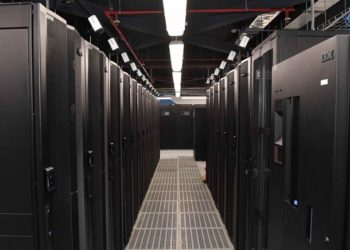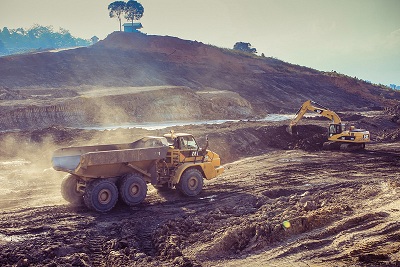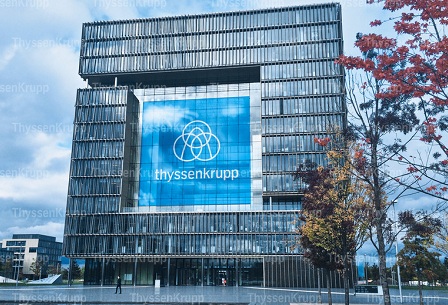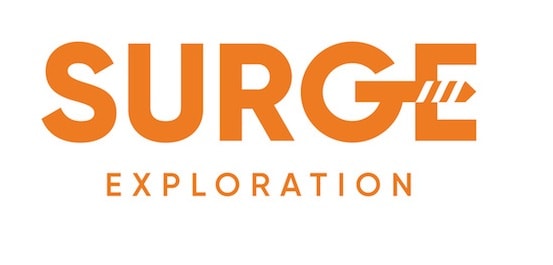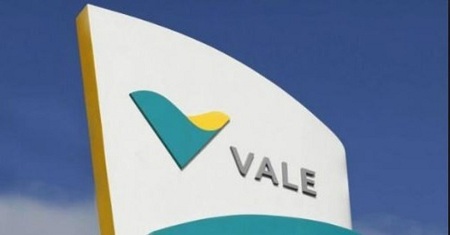ENGAGING more with India will have multi-fold benefits for the Australian mining industry, according to Indian business expert Dr Meena Chavan. In order to retain competitiveness, she says it is not an option any more for Australian companies involved in mining to engage with emerging economies like India, it is imperative that they deliberately seek these opportunities.
“One of the main reasons this has not happened as much as it should to date is the lack of information. Australian mining firms have not had the information and not had the need to seek it in the past. Hopefully they will do so now as it is an opportunity they can’t afford to miss,” she says. Dr Chavan is a senior lecturer and director of international business in the Faculty of Business Economics, Macquarie University, Sydney.
India has a strong mining foundation. It has the world’s fourth largest coal reserves and significant reserves of minerals like bauxite, titanium, chromite and diamonds.
India has a strong mining foundation. It has the world’s fourth largest coal reserves and significant reserves of minerals like bauxite, titanium, chromite and diamonds.
India has a strong mining foundation. It has the world’s fourth largest coal reserves and significant reserves of minerals like bauxite, titanium, chromite and diamonds.
Many say India can be the next China in terms of stimulating the mining industry but Dr Chavan feels it is already in line with China regarding the need for resources. In 2013 India’s real GDP grew 4.4% despite the gloomy global economic climate. The International Monetary Fund (IMF) has forecast GDP growth of around 5.4% in 2014 and 6.4% in 2015.
She says India’s government has recently introduced reforms aimed at opening up key sectors to foreign investment and to cut certain subsidies which are expected to help boost sentiment in the medium term. “FDI in India is the focus of the Modi Government while India’s very large workforce is increasing its productivity. These factors will result in sustained growth in India over the next decade which will see India as the world’s third largest economy behind the USA and China.
“What is most important is that by 2030 18% of the world’s population will call India home because the median age now is just 27. India will have a very large working population for many years and recently the IMF stated that it expects India’s economy to expand by 6% annually for the next three years.
“India’s growth is being driven by increasing productivity, which is happening due to greater consumption and a major reason for this is a growing middle class. This consumption is propelling the need for resources and it is a similar situation to China. Indian multi-nationals are operating across the globe with subsidiary operations in many countries. All these companies and their subsidiaries need resources.”
Australia can benefit
Indian power utilities are struggling to meet increased demand for power and are unable to obtain sufficient domestic coal which means they must increase coal imports. They have found much of what they are looking for – high quality coking coal – in Australia. Indian needs will enhance demand for Australian coking coal and will support prices.
Dr Chavan says Australia’s mining industry can benefit from India in a number of ways:
- India is deficient in the adoption of best practice operational methods used to evaluate resources.
- India has many mineral-rich resource areas which are underexplored and unexploited due to the lack of efficient, modern mining methods.
- India lacks the latest processing technology.
- There is a need for effective training and safety education.
- Best practice environmental management services are lacking.
“Australia is well known for its sophisticated mining technology and more than 60% of the world’s mines use Australian software services. Australian capabilities and competencies are needed in mine management systems, affiliated services for underground mining, coal washing, general technologies and various mining services.
“On the other side of the coin, Australia can also benefit through India’s geopolitical positioning with neighbouring China which requires Australia to partner more with India to counter-weigh the very strong Australia-China relationship – after all putting all of the eggs in one basket is not a very good strategy.”
Senior lecturer and director of international business in the Faculty of Business Economics, Macquarie University, Dr Meena Chavan.
Senior lecturer and director of international business in the Faculty of Business Economics, Macquarie University, Dr Meena Chavan.
Australia’s mining and coal industries have a very long history with India. Both nations have been friends for many years and development in coal-rich areas of India has been occurring for a long time. This has also been on the agenda of energy companies in India for years.
Dr Chavan says foreign direct investment (FDI) from India is welcome and very important, as it helps keep the resources industry functioning and helps retain jobs. “In the last few years billions of dollars have been invested in Australia. FDI in resources offers a number of advantages for the host country including provision of capital, technology, know-how and access to markets. The benefits are substantial and last for a long time because they contribute to long project life.
“FDI is just one aspect. There is another way Australia can benefit from India and that is through strategic alliances, networks and linkages, which have largely been overlooked. Not every company can gain direct FDI benefits. There are a large number of smaller mining firms and suppliers that need to become involved in non-equity alliances.
“There is a lack of inter-firm networking between Indian and Australian firms. This can be developed through trade delegations, business visits, mining trade fairs, conferences and workshops. These linkages need not be equity based – they can be non-equity contracts or collaborations to share synergies, capabilities and competencies, and to develop new services and innovations leading to the creation of export opportunities.
Senior lecturer and director of international business in the Faculty of Business Economics, Macquarie University, Dr Meena Chavan.
“To provide an example of how this can work, Tata Steel, a multi-national organization based in India, gained access via collaboration to Bluescope’s proprietary technology for several characteristic manufacturing methods which assisted Tata to improve operations while Bluescope obtained access to Tata’s marketing and distribution network as well as their knowledge. Tata shared with Bluescope the capital cost of setting up the required manufacturing facilities in India. Both acquired knowledge to improve their processes and their businesses while Bluescope was assured continuous supply of steel from Tata.
“Australian mining can benefit by providing service exports to enhance the capabilities and competencies of Indian mining operations. For instance, there is a big need for occupational health and safety consultancy services in mining, along with a need for specialist mine logistics and environmental management systems. Australian mining technology and software services can collaborate with Indian software firms to help disseminate Australian software expertise in India and worldwide. Although Australian software has 60% of the market, there is always room to expand this through collaboration with India.”
FDI from India is needed
“FDI from India is increasing and looks set to continue,” Dr Chavan says, “and the appetite for resources in the rapidly growing market is huge. India and China are two of the world’s best performing economics, and this growth is propelling demand for resources. Over the last seven years India has emerged as a major player in overseas resource investments and development.
“The current global resources market is not conducive to investment, as is very evident in Australia, which means India has an important role to play. There is a shortage of international capital in Australia which enhances the attractiveness of alliances with Indian partners.”
There are several reasons why FDI from India is increasing, she says. “I have spoken to a number of multi-national Indian corporations involved in FDI in Australia and their views are that Australia has premium quality coal that can be mined using world-class facilities and with environmental regulations that are second to none. Also, Australia allows 100% FDI and has very little sovereign risk, unlike many other mining destinations. Indian companies are also attracted to Australia because of its clear policies, its good workforce, the ease of doing business and, importantly, the timeframe for mining approvals. They consider Australia to be a safe country that is favourable for doing business.
“Everyone knows Australia has a very efficient mining sector that is open to foreign investor participation. This brings with it and fosters the expertise, know-how and technology essential in development of the world-class, internationally competitive mining industry found in Australia.
“FDI from India is also increasing because many Indian firms are cash rich which enables them to purchase and engage in investments, acquisitions and mergers across the world. India has long been an active candidate for investing in Australian mining due to its capacity to mobilize capital for direct and indirect investments.
“Although global demand for some commodities has eased, I see India’s huge population, growing middle class and increasing consumption as fuelling the need for resources in the future. Indian FDI is here to stay because Indians need premium quality coal while Australia needs new capital investment in resources, infrastructure and most importantly, manpower. I look at it as a win-win situation for both countries.
“The recent uranium discussions between India and Australia are an example of the results of increased cooperation between the two countries.”
Country is underexplored
Mining in India has come a long way from the state-owned days but Dr Chavan says there is a fair way to go before it is cleaned up to a satisfactory level. “This process is happening rapidly under the regime of Prime Minister Narendra Modi, who took office in late May 2014.
“India has a strong mining foundation and the future is bright. It has the world’s fourth largest coal reserves and significant reserves of minerals like bauxite, titanium, chromite and diamonds and recently there have been gold, copper, zinc and uranium discoveries. In terms of production it is doing well, ranking third in coal, second in chromite, fourth in iron ore and sixth in bauxite, but only 10% of the estimated mineral resource has been explored. Australian companies have huge opportunities to carry out exploration in India or assist Indian companies with this work.
“The location makes it an ideal hub for raw materials and metals exports to European and Asian markets. There are already major iron ore, steel and aluminium exports to China, Japan and UAE but there are opportunities to grow exports. Currently 50% of India’s steel is exported and 50% of that goes to China.
“Indian firms are determined to maintain their competitiveness. A few years back Indian companies were busy seeking new markets and engaging in internationalization but are now seeking efficiency, collaboration, innovation and new products which add up to a bright future.”
India can benefit
Australia has a major role to play in helping India’s mining industry reach its potential and there are many capabilities in the areas of mining equipment, technology and services (METS). Dr Chavan says Australia’s METS expertise is very much needed to assist Indian companies modernize and increase production.
“Australia is strong in automated production techniques with fabulous technology to help generate high output. Australia can provide mining consultancies in the areas of mine safety, mine management and environmental management as well as specialist training programs so that domestic companies can enhance productivity and increase safety.
“There is huge and growing demand for environmental management systems in India because open cast mining is prevalent – they need to solve existing problems and improve environmental practices, and there is increasing pressure from communities.
“It is important that Australian expertise is introduced to the problems facing India’s mining sector. This can also assist with infrastructure such as roads and up-to-date electricity distribution networks. In recent months a number of Australian companies have won contracts but there are many more opportunities.
“Despite sitting on the world fifth’s biggest coal reserves, India is the world’s third largest coal importer. Production is not reaching its potential owing to delays in securing environmental clearances. Australian companies have opportunities to provide consultancy services to help secure environmental clearances, confer with government agencies on what factors are impacting the clearances and how they can be expedited.
“Australian METS companies can enhance export earnings by providing services in India and should, therefore, explore the opportunities. METS companies seeking export opportunities should contact Austrade and the Department of Industry as they are active in India and support METS through collaboration with leading Indian mining companies.
“It is not difficult for METS to operate in India,” she says. “There are no quantitative import restrictions on METS, import duties are nominal for capital goods and apply equally to products from various international sources, and all they have to do is obtain approval from the Director General of Mine Safety. This can be a little time consuming but there are local approved agents who can help. They need to be approached which can be done with the help of Austrade.
“Private sector participation is allowed across mining sectors and in coal washeries. For coal only captive mining is allowed by private companies, including international companies, but if you look at the overall picture market entry is quite simple. The common routes are establishing a presence by appointing a local agent, partner or distributor, and most Australian companies in India today are operating in this manner; or METS can set up a branch office, which is a simple and cost effective way of entering the market. Setting up a manufacturing facility is time consuming owing to the need to form and register a local company but appointing a local agent or distributor is the quickest method.
“Participation should be done with a little caution and by conducting research to find out who the intended agent is engaging with, what is their history, what areas do they specialize in, how many qualified staff do they have, etc. With regards to logistics, India has a good rail network, there are a number of ports around the coast and new infrastructure is being built which will enhance development of mining.”
Free trade negotiations
Dr Chavan says both governments are doing well to encourage cooperation and collaboration, and are striving to enhance this process with mining and energy at the forefront of free trade agreement (FTA) discussions that both countries hope should be signed by the end of 2015.
“Recently a 450-strong Australian trade delegation led by Minister Andrew Robb visited India as part of these negotiations. Prime Minister Modi also attended the G20 meeting in Australia last December and when he addressed federal parliament, outlined India’s requirements for more mining and energy resources.
“Both countries need to strengthen bilateral trade relations and it should be a priority of both to enhance this process. The governments realize that there is significant potential for further collaboration and both have been making efforts for a long time to enhance the process of building mining sector linkages.
“Several treaties and memoranda of association have been ongoing between the two countries in areas like science, technology and intellectual property, and in 2008 the then Minister for Resources, Energy and Tourism Martin Ferguson signed a five-action plan with the Indian Ministry of Coal, Mines and Renewable Energy which underpinned bilateral engagement for technical cooperation in minerals and energy, including trade and investment facilitation. The same plan was updated in May 2011 when the annual Ministry-level Australia-India Energy Dialogue was launched and then again in 2014 the dialogue was resumed in Brisbane, which is leading to development of an FTA.”
More information needed
A major impediment to forging stronger links and increased collaboration and cooperation between Australian and India, according to Dr Chavan, has been lack of information. “Most Australian mining firms do not have adequate information about India’s mining sector and the opportunities. There needs to be a mechanism to bring the two sectors together face-to-face to discuss how they can assist each other.
“Australian mining companies often state that they do not have the time and resources to explore opportunities to engage with India; some state they are too small and do not have enough knowledge about the opportunities, the Indian economy or the institutional structure; and many believe it is too risky.
More engagement with India can only enhance the benefits that mining brings to Australia.
Australia’s METS expertise is needed to assist Indian mines modernize and increase production.
“By gaining information these companies will see that India, which is a very large democracy, has changed a lot in the last 10 years and the institutional structure has changed which means there are much fewer risks than many other countries.”
She says there is a need for a separate governmental agency or division to be established to promote Australian METS services to India and Indian mining competencies to Australia.
“I hope that the proposed FTA will make cooperation between the nations significantly better. Prime Minister Tony Abbott’s recent visit to India signifies the start of new links and networks, and hopefully opens up doors for METS companies to engage further.
“India has a complex regulatory and institutional environment and there is a need to invest significant time and effort. There have been efforts made to reduce the barriers to Australian business entering the market through Austrade but more needs to be done and I hope the FTA presents opportunities to open doors, minimize tariffs, simplify regulations, ease restrictions and ultimately make trade more competitive so that Australian companies can succeed in India.



